The colonists had adopted their architectural styles in building modified to the climate context (warm and humid climate). These colonial buildings in Malaysia also have combinations of the styles from other cultures such as Indian and Chinese due to migrations and from the local Malay traditions. This paper will discuss about the development of architectural styles that have been experienced in Malaysia since the colonial era. These unique architectural styles and motifs have heritage values, many of which are being conserved until today. Apart from that, we will also look into their influences in a smaller scale as well as in a larger scale – as this has formed an identity for Malaysia’s architecture. We have been arguing for some time about the true identity that represents Malaysia’s architecture, and this matter has recently become a main factor to consider when deciding the style of architectural decorations to be integrated into building design. On the contrary, there is also an urgent need to develop new appropriate design linked with the past and present. A synchronised awareness by both the architects and the planners of the historical and cultural perspective of a place and its architectural precedence provides a firmer basis in the pursuit to relate new designs with the local technology and sosio-economic development.
Introduction
The architectural style’s evolution in Malaysia from pre-colonial years through colonial time and later to independence has become one of the great triumph stories for its development in the post-colonial period. Without any doubt, the conquerors in the past had apparently exerted their influences on the architectural development. Besides, Malaysia is a multi racial country with its population consisting of the predominantly Malay population with the Chinese, Indian and other minor races. Consequently, the architectural development of Malaysia is also influenced by these various cultures due to migration of the Chinese and Indian during colonial era. Besides their determination in seeking for political status and economic roles, the immigrant’s culture and customs had given an impact to the local architecture. Many foreign cultural heritages and legacies that existed in colonial time had left significant influences on the country’s cultural development and visibly in the heritage buildings, which remained until today.
Pre-Colonial Period
The development of architectural styles in Malaysia is one of the greatest storyline of the local architectural history. During the 5th century AD, traders from India and China used the East-West trade route and would stop at Tanjung Dawai as a stopping point. The traders traveling with the ships/junks between China and India used this place as an ideal resting destination while waiting for the monsoons to change. They, at the same time, spread their religion and culture when they settled down for trades. This can be seen during early Hindu-Buddhist civilisation in Lembah Bujang, Tanjung Dawai, Kedah. They had left their marks in a form of tomb temples known as candi at Lembah Bujang (Bujang Valley). After centuries, Kedah became a vassal of the Sumatran kingdom of Sri Vijaya. Yeang (1987) had stated that the beginning of the Indian Kingdoms styles can be traced in the early architecture of Sri Vijaya and Majapahit Empires, which is from the 7th to the 14th centuries. Eventually, Malacca was established as an important port (Straits of Malacca), where it became a major trading centre for shipping route between China and India. The traders brought along their cultures and customs, which had influence the existing local’s culture.
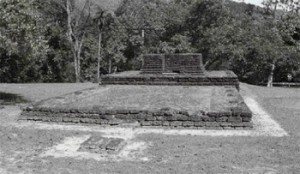
Figure 1: The reconstruction of the candi found at the premise of the
Lembah Bujang Museum.
The most significant influence introduced by the Chinese traders was their art and architecture. The architectural influences of the Chinese architectural led to a style called Straits Eclectic that instigated from the 15th century to mid-20th century. The impact was mostly in urban areas in a form of shophouses and terrace houses. The architecture adapted to the tropical climate has combination influence of Malay and European architecture. In the later 18th Century, Penang Island was established as a trading centre in 1786 by the British East Indian Company and in 1819, Singapore had joined Penang to function as the trading centre. Years later, Kuala Lumpur, Taiping and Ipoh became a Chinese tin mining area around 1860. Since then, the city grew rapidly due to the tin mining industry and later as a capital city of the Alliance States of the British administration. The Chinese architecture style had dominated with small scaled family enterprises operated at shophouses.
Colonial Period
Due to the constraint of fire, flood, filthy condition and overcrowding in Malay Peninsular during 1881-1882, the government decided to rebuild the colonial town. Consequently in 1884, Frank Swettenhem, the British resident of Selangor, had introduced Building Regulations and town planning methods was imposed in all the building constructions. In 19th century, the British had adopted architecture style, originated from the British building style, a mixture of the British and Moghul Architectural style (Indian Muslim) in India. This architectural style is commonly used in administrative buildings. According to Gullick (2000), before the Second World War, the British had started to make its impact in Malaya’s architecture. In most British colonial countries, the Public Works Department (PWD) was entrusted to design and construct the public sector buildings such as government offices, court buildings, schools, station buildings, quarters or human resources and plantations.
Post-Colonial Period
After the Second World War, this is the time in which the new nation took control of its own reign. Yeang (1987) stated that the Malaysian architects, who received their architectural education overseas especially in UK and in Australia were given full responsibilities for the major building projects in the country. However, most of the main architectural firms were still controlled by foreigners and eventually they obtained commissions from the British Trading Houses. The local architects are still mostly influenced by the existing British architecture.
Identifications of Architectural Style
According to Heritage of Malaysia Trust (1990), the architectural style of Malaysia has been classified according to the building styles. It consists of influences by the European, Chinese, Malay and Indian sources that were a mixture of various styles modified to the Malaysian environment. These included :-
- Indian Kingdoms (7th – 14th Centuries)
- Malay Vernacular (pre-15th Century to present)
- Straits Eclectic (15th Century to mid-20th Century)
- Chinese Baroque (19th Century to early 20th Century)
- Chitya Indian Vernacular (15th Century to Mid 20th Century)
- Colonial (17th Century to mid-20th Century)
- Modern (1950s – 1980s)
The Influences
Even before the Second World War, European style had influenced the architecture of Malaya, especially to the buildings style in Malacca, Penang, Kuala Lumpur as well as Perak. The styles were modified according to the tropical climate and combined with architecture influence of Malay, Classical Portuguese, Dutch, English and Chinese. Since 15th Century, when Chinese merchants came to the Straits Settlement of Malacca, they had brought in Straits Eclectic styles. Besides, the British architecture was also altered to cope with the tropical climate and combined with the influence of Malay, European, Portuguese and Dutch. It has created a unique style in urban architecture, such as shophouses and terrace houses. This architecture style was very initially influential in Penang and Singapore but later spreading to the whole of the town and cities in Malaysia. These styles have a few variations from one region to another where large numbers of Chinese populations have settled predominantly in Penang, Singapore and Kuala Lumpur. As stated by the Heritage of Malaysia Trust (1990), within this general style, several building periods can be identified as:-
- Malacca Town Houses
- Kuala Lumpur Shophouses
- Kuala Lumpur villas
Malacca Town Houses
Some of the earliest past histories of the town houses were built in Malacca. “Majlis Perbandaran Melaka Bandar Bersejarah” (26th June 2005) affirmed the best examples can be found on Jalan Tun Tan Cheng Lock, which were built by wealthy Malacca Straits–born Chinese merchants. The buildings were used for business or residential purposes. Nowadays, many of the houses are unoccupied but are maintained as ancestral homes. According to Heritage of Malaysia Trust (1990), during the time when the Portuguese occupied Malacca, the earliest maps and drawings had indicated some structure of development on Jalan Tun Tan Cheng Lock since 1514. During the Dutch period, urban structures had become more organised and had a better road system. The road systems become the draft line for building constructions. Jalan Tun Tan Cheng Lock (known as Heeren Street) and Jalan Gelanggang (known as Jonker Street) were focused asthe areas for development and trading. According to the classification by Majlis Perbandaran Melaka Bandar Bersejarah (26th June 2005), Malacca town houses are categorised into 2 categories, which is Mid-18th Century and earlier; and After Mid-18th Century.
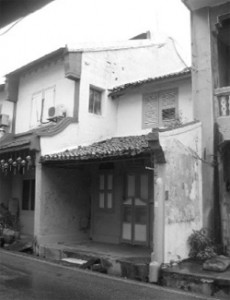
Figure 2: Town houses built during
Mid-18th century and earlier; or known
as early town houses
Mid-18th Century and Earlier – The town houses built during this period were constructed during the Dutch Colonial period. As stated by the Heritage of Malaysia Trust (1990), town houses designs were unique and had variety of architectural styles. Columns and pilasters may be in Doric and Corinthian. Windows may be Venetian, Chinese or Malay imitative with louvered by European influence, or solid shutters, by Chinese influence. In houses of that era, the upper floors do not extend beyond the walkway and instead there is a lower secondary roof. Though the main architecture influences to the buildings were from Chinese, the European architecture influences, especially Dutch row houses tradition were very obvious as well. Regarding to Lim’s (8th June 2005) statement, these houses had characteristics which gave it the identity of being built in the Dutch period including:-
- The ground floor frontage has a single door with existing town house window that was designed before the Dutch period.
- The brickwork of the drainage system has its own characteristic.
- The material used for the steps at the main entrance and at the doorway of the passage leading into the air well, indicated the social status of the owner.
- The hood which existed above the kitchen (similar to that found in the kitchen in the Stadhuys) was made of wood.
Buildings are usually less lavish with more usage of wood on the façade. The houses were usually only two storeys with a variety of building heights but some of them were only 1 storey. The unique roofs tiled with Chinese clay tiles with the rounded gabled end, which originated from Chinese were one of the features rare to be found in this era. These roofs do not have a secondary roof for ventilation and only rely on internal air wells.
During the 18th Century, the undeveloped city of Malacca had a large quantity of land but no new buildings were to be built. There were only narrow and confined buildings. Though the planning of the building hold on to Chinese planning principles, it had Dutch influences on some of the features. It had a form of security to the dwellings in a dense area to protect residents from intruders.
After Mid-18th Century – From the source of “Majlis Perbandaran Melaka Bandar Bersejarah” (26th June 2005), this era was the beginning of the transitions of building styles, materials and designs. The buildings may be either 2 or 3 storey and lavishly decorated with plaster figures. The upper floors extended beyond the walkway. The plan and design of a Chinese house is ascetic and formal. The principal design is mutual symmetry along a single alignment from north to south. This had automatically made the Chinese buildings design had a typical shape, either a rectangle or a square. In town areas, houses were built and planned by taking materials, interior space and street frontage into consideration. Even the general layouts of clustering buildings had formal characters. The houses became a series of rooms with successive courtyards arranged longitudinally. Town houses in this era had a covered walkway as a linkage, and some of it had extended party wall that blocked the passage. With the advantages of both the shaded five-foot-ways and private atria, the houses were popularly taken as a model of low-rise, mixed use, high-density living, and was relevant to today’s urban needs.
Kuala Lumpur Shophouses
In the 1850s, many Chinese tin miners migrated from Klang to Kuala Lumpur to operate new and larger tin mines under Sultan of Selangor. It was then the beginning of the development of Kuala Lumpur. Gullick (2000) affirmed that they landed at the joining of Sungai Lumpur (now Gombak) and Sungai Klang and established tin mines at Ampang. Though the shophouse form was developed in Malacca, Penang and Singapore by the early 19th century, shophouses were only introduced in Kuala Lumpur during 1884. The Kuala Lumpur shophouses styles are similar to the styles that are current in Europe. According to the classification of Idid (1996) and Heritage of Malaysia Trust (1990), in this general eclectic style attributed to colonialism, several building periods can be identified as below:-
- Pre 1884 – These shophouses were simple attap huts introduced by Chinese merchants to service the tin miners.
- Post 1884 – The façade of the shophouses developed according to style in Europe but the basic plan was not modified. The variation in façade treatment included:-
- Utilitarian 1880s – 1900s
Large single wooden beams were supported by heavy pillars. The first floor had a single opening, which was covered with simple wooden shutters. Then, this was replaced by brick and mortar wall with two or three windows. The windows then became more comprehensive and included fanlights. The elevation of these shops was quite low with steep tiled roofs that often included jack roofs for additional ventilation.
- Neo-classical 1900s – 1930s
These shophouses were normally three-storey high. The facades were more complicated with the integration of elements of Neo-gothic, Baroque, Palladian or Renaissance designs. Greek and Roman columns, decorated window frames and festoons were common in the design. Ornate facades featured parapets, open balustrades and flamboyant gables.
- Art Deco 1930s -1940s
Art Deco facades were distinguished by strong horizontal and vertical elements and the abstract geometric shapes were mostly used as decorations. Typical Art Deco features included banding devices, Shanghai-plaster motifs and concrete flag poles.
- Utilitarian 1880s – 1900s
Kuala Lumpur because of its strategic location. During this early period, all building structures were made of wood and attap (thatch roof), there were no remains of any structure because they were destroyed in the fire and subsequent flood in 1881.
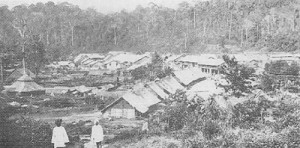
Figure 4: Kuala Lumpur in transition (c 1884) attap shanties in the foreground and brick buildings behind with the wall of jungle in the background; Source: Gullick, J. M., (2000), A History of Kuala Lumpur 1856 -1939, Selangor: MBRAS, p. 312
Thereafter, Frank Swettenham had required that buildings should be constructed of bricks and tiles. From the information given by the Penang Tourism Guides Association (20th June 2005), Frank Swettenhem had introduced a building system by instructing the original attap hut settlement to be rebuilt in brick with tiled roofs and a five foot covered passageway along the road. A shophouse was required to provide a walkway or veranda-way, which at least had five feet in width. Since then, this kind of walkway was called the ‘kaki lima’ or five-foot way. The main reason of creating a 1.5m wide covered passage in front of the shophouse was to enable pedestrians to walk under cover, protected from the sun and rain, and away from vehicular traffic. Later on, he had also imposed a regulation to leave a space or lane at the back of the shophouses as a sanitary lane. It was a space in between two rows of shophouses that faced back to back.
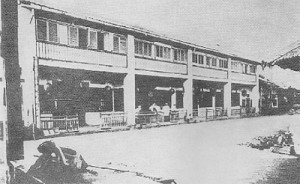
Figure 5: The first shophouses built in brick, sited in Old Market Square,
and built by Yap Ah Loy, noticeably lacking the ornate fronts of later
shophouses, though they are two-storey buildings of that type.
Source: Gullick, J. M., (2000), A History of Kuala Lumpur 1856 – 1939,
Selangor: MBRAS, p. 319
This lane gave convenience by allowing bullock carts to collect night soil, and for safety purpose, gave access to a fire engine when required. As the town grew bigger, sewer lines and other utilities were laid beneath the streets and the roads were re-paved, thus raising the road level above the level of the five-foot way. By looking at the level of the walkway can therefore be an indication of which period was the shophouse built – the older the shophouse, the lower the walkway.
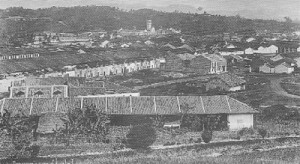
Figure 6: Kuala Lumpur in 1897, a view from high ground to the west showing
the development of Kuala Lumpur.
Source: Gullick, J. M., (2000), A History of Kuala Lumpur 1856-1939,
Selangor: MBRAS, p. 321
In 1884, the year of the rebuilding programme, the town population had reached to a number of 4,504. According to Gullick (2000), after that, there was a slight and simple renewal: the town was actually expanding rapidly, with 180 new houses added in 1888. The beginning of the railway provided accessibility towards the development of buildings that increased during 1890s and consequently the Sanitary Board was established.
Kuala Lumpur villas
The grand villas in Malaysia were mainly built during the late 19th century and beginning of the 20th century by wealthy Chinese businessman. After staying sometime in Europe, they were strongly influenced by the architecture style. After returning to Malaysia, they asked their designers to design and employed craftsman from Europe to build mansions, which look like the ones they saw in Europe. They even imitate the Neo-Classical motifs that were popular in Europe. The Chinese believe in “feng shui” and it was incorporated into the design of these buildings and this gave them a specifically European/Asian eclecticism. The orientation of the buildings was strictly following “feng shui” principles and the mansions were liberally decorated with symbolic ornamentation that had special meanings to them.
According to Heritage of Malaysia Trust (1990), palladian villa is one of the most attractive architectural style in those days, which existed in England from 1710 to 1750. This style was actually based on certain regulations established by Andrea Palladio (1508 – 80), who was one of the famous architects during Italian Renaissance. The Palladian style was quite common in England. It was first used for mansions in the English countryside and then eventually modified for churches and administrative buildings. This style was widely used in English colonies, including Malaysia and mansions of this style were mainly found in Penang, Kuala Lumpur and Singapore. This is when European influence had the most impact on Malaysia’s buildings at the beginning of the 20th Century. In Kuala Lumpur, the remaining great mansions are found on Jalan Ampang (Bok House, Moi Mansion, and the Pakistani Embassy), Jalan Tangsi (Wisma Chow Kit – PAM building) and Medan Tuanku (Wisma Loke). The buildings in Ampang areas and Bukit Tunku were mainly built for British officers.
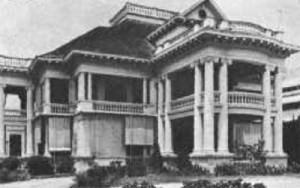
Figure 7: Bok House built in 1920 – along Ampang Road, that we know
better today as Le Coq d’Or.
Source: Bowie, P., “Cycle and Carriage”, Bulletin Warisan Special
Edition 2004, unpublished article, Badan Warisan Malaysia, p.4
Within the Straits Eclectic style, several architectural styles can be identified in Kuala Lumpur villas:-
- European influence – These buildings had a mixture of different style but the building plans were mainly European-style. Heritage of Malaysia Trust (1990) pointed out that these buildings were easily found during the 1880s, with some Baroque influence and Palladian style during Renaissance revivalism. The Renaissance and Palladian buildings have a special feature, which is a symmetrical design. However, the slight curve on the portico, ornateness of the gate and grand central stairs are of Baroque influence. Bok House, which is located at Jalan Ampang, is one of the great examples of these types of the villas. It is a more purely European-style villa built in the early 1890s in Kuala Lumpur. The symmetry of the building, the uniquely shaped balusters, the repetition of columns at the corners and the extreme use of the dentils and the brackets at the architrave showed that the Renaissance planning was adapted to the tropical climate. The roof here in Malaysia has a steep pitch. The balustrade on the roof peak serves the purpose of hiding skylight that provides natural lighting for the hall on the upper floor. There is also a verandah surrounding the building on its both floors.
- Chinese/European influence – These buildings have various styles from both Chinese and European influences. Another example on this style is Wisma Loke, which was built by a wealthy tin miner’s family during 1885. The mansion is reminiscent of a European-style villa and had a symmetrical design with a central entrance doorway leading to an inner two-storey courtyard. As stated by the Heritage of Malaysia Trust (17th June 2005), the annexe, which has ornate balcony terraces with decorative formed iron beautify the building. There are artworks on the Dutch gable ends and on the front façade of the building. Chinese-style ventilators and windows were used and roof-top parapets obviously rose above the roof line. Chinese murals, Chinese figures and sculptured relief are found in the exterior and interior of the mansion. Although the style is more to European style, the integration of Chinese style makes these houses a unique Straits Eclectic structure.
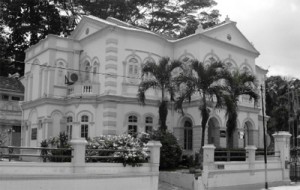
Figure 8: Wisma Loke stands on the site of an earlier mansion which
was erected by a wealthy tin miner, Chow Ah Loke in 1885.
After Independence
Malaya’s independence was declared in 1957. After Independence Day, Malaysia’s development had a drastic change. As stated by Yeang (1987), the government gave emphasis to the development of the country in various sectors especially to the commercial and administrative sectors. That is when the commercial and administrative centre in Kuala Lumpur was established. An idea of residential satellite town was proposed and took into consideration to support the capital city. Originally, during the 50’s and 60’s, Petaling Jaya (PJ) in Selangor was planned for some new development as a dormitory town to Kuala Lumpur. The purpose of this planning was to cater the fast growing of Kuala Lumpur’s population in the future. Petaling Jaya had however outgrown its original role and slowly became a residential city instead. The type of people who stayed in PJ and worked at Kuala Lumpur can be reflected by the type of houses built in this area. The early houses built in this area were either single or double storey houses with the most simple and plain designs and were affordable for the middle income buyer. While the bungalows with bigger compounds were cater the richer buyer. Over the pass few years, the governmental under the PJ Municipality was enlarged gradually. More and more areas are opened for housing development as the population increase tremendously.
When Malaysia obtained its independence, there were quite a number of Malaysian architects who studied abroad especially in UK and Australia had returned home. During the time, the major architectural firms were managed by emigrants and automatically they were given commissions by the British Trading Houses in Malaysia. Chen (1987) cited that the local Malayan architects began to take over the firms when the colonial British administration left Malaysia. The architecture style during this period still remained “international style”. The majority of the architect firms were significantly influenced by the modern architecture. This can be seen through the work of Lee Corbusier, Mies Van Der Rone, Walter Gropius, Smithsons, Lasdun, and the Brutalist movement during the 50’s and the high-technology influences during the early 90’s.
Through the design of the individual houses, it was best reflecting the basis of trained architects. Consequently, this had appeared to be signs of dissimilarity in designs between those studied in Australian schools and British schools. The earlier house designs took more consideration on the climate and the use of timber had been part of the element in Australian designs. Nevertheless, those who studied in British schools had more emphasis on modernisation with new approaches towards the use of different materials and technologies in building construction.
Beside houses, shophouses were also one of the major components of urbanism in Malaysia, and they had been the source of economic growth and urban development before 1970s. Just as stated by Teh (1987), during the early 20th century, three storey shophouses were introduced in Kuala Lumpur and was quite popular compared to the normal design of single or double storey shophouses in other places. This is caused by the increasing demands of urban compactness and land values. However the traditional arrangement of shophouses linking to the street remained the same. Generally, this model of development within traditional linear blocks along the streets sustained even though there were buildings higher than three storeys. This kind of expansion in development prolonged until 1970s. The street pattern of linear blocks had actually constrained the size and structure of the buildings. However after that, the pattern of urban development changed progressively as high rise buildings and skyscrapers began to emerge in our country. Kuala Lumpur was the earliest place in Malaysia to have built high rise buildings. The development of high rise buildings became most intense and had lead to the conversion of two storey shophouses into high rise commercial buildings.
By middle of 18th century, some of the local architects had made an effort to convey a Malaysian identity into architecture by using structures and elements of traditional architecture. This idea apparently can be seen interpreted in the British Council Building by using a Malay styled roof but with British styled structure and design. This was followed by the National Museums in a more typical style. There were attempts to design The Putra World Trade Centre Complex to be a stylish tower. The convention hall was designed in the form of a traditional palace and is clad in glass. However, to bring out the Malaysian identity of this building, it has made use of over scaled Islamic arches to coherent with the identity. The combination of both Islamic and Malay culture elements appeared to be an ideal design of the architects to articulate national identity. It is noticeable that the Malaysia’s architectural heritage is culturally different from others. There had been stages of transition through centuries. They vary from colonial public buildings and residences to Chinese shophouses to Malay village houses and palaces. This also happened in Malaysia’s society, particularly with the rapid growth and urbanization. Some architects think that implementation of too many kinds of architectural style is too stiff compared to the adoption of various influences and consider this as being more appropriate in architectural sector. In this modern convention, three functions of shops, offices and apartments are articulated in three blocks. However, there are diverse elements and details of stepped terraces, curtain walling and colours, which were highly expressed through the various facades. Until now, Malaysia’s building designs still have adaptation of different building and cultural influences, both regional and international.
Conclusion
In these modern days of Malaysia, our country’s development has been growing rapidly. Since then, there are conflict between urban change and heritage and this situation is physically obvious in all the towns and cities in Malaysia today. Not forgetting the identity of Malaysia, there are many buildings that have combinations of Malay roof forms with the mainly modernist types. The remaining of British Colonial past had made intense effort to introduce Islamic elements in the means of government buildings. The force of rapid urbanisation brings in newly built intensities onto some places that demolished almost all the heritage buildings which were there before. This will affect Malaysia’s urban not just architecturally and environmentally but also socially and culturally. On the contrary, there is an urgent need to develop new appropriate design linkages with the urban past and at the same time relevant to the present. This endeavor should be for an appropriate inventiveness. A coexisting awareness by the local architects and the planners towards the historical and cultural context of place and its architectural priorities will provide a firmer basis in the pursuit to relate new designs with the locality and time. Any argument on the making of modern architecture in Malaysia should be given obvious outstanding references to the various foreign involvements into the country.
This paper was written in 2005 by Ho Kah Chun, Associate Professor Dr. Ahmad Sanusi Hasan, Dr. Norizal M Noordin. School of Housing Building and Planning. Science University of Malaysia, Penang.
–
Reference
- Bowie, P., “Cycle and Carriage”, Bulletin Warisan Special Edition 2004, unpublished article, Badan Warisan Malaysia, p.4.
- Chee, V. F., “Houses: 1957 – 1987 (or 30 Years of Dreams Fulfilled?)”, Post Merdeka Architecture Malaysia 1957-1987, Kuala Lumpur: Pertubuhan Arkitek Malaysia, pp.31-36.
- Gullick, J. M., (1994), Old Kuala Lumpur, Kuala Lumpur : Oxford University Press, p.10-18.
- Gullick, J. M., (2000), A History of Kuala Lumpur 1856 -1939, Selangor : MBRAS, pp.18-20, 45-48, 312, 319, 321.
- Heritage of Malaysia Trust, (17th June 2005), PAM Building, http://www.badanwarisan.org.my/cultural_tourism/kl_heritage_trails/merdeka_square/pam_building.php, [referred on 17th June 2005].
- Heritage of Malaysia Trust, (1990), A Handbook Malaysian Architectural Heritage Survey, Kuala Lumpur: Badan Warisan Malaysia, pp.24-33, 76-79.
- Idid, S. Z. A., (1996), Pemeliharaan Warisan Rupa Bandar, Kuala Lumpur: Badan Warisan Malaysia, pp.194 – 199.
- Lim, H. C., Arbi, E., Chan, K. K., Cardosa, E., Jorge, F., Chua, J., Lee, E. C., Tan, H. K., and Tiong, K. B., (8th June 2005), “A joint cultural preservation project under [Ambassador’s Fund for Cultural Preservation] between U.S. Embassy Malaysia and Badan Warisan (Heritage Trust) Malaysia”, http://usembassymalaysia.org.my/malacca/m1.htm, [referred on 8th June 2005].
- Majlis Perbandaran Melaka Bandaraya Bersejarah, (26th June 2005), GARISPANDUAN: Pelan Tindakan Kawasan Pemeliharaan Majlis Perbandaran Melaka Bandaraya Bersejarah,
http://www.mbmb.com.my/mbmb/konservasi/2-5.html, [referred on 26th June 2005]. - Penang Tourist Guide Association, ( 20th June 2005), Kuala Lumpur Heritage Trails – Market Square, http://ptga.org.my/textpublisher/textpublisher.cgi?id=53, [referred on 20th June 2005].
- Teh, D., “Notes on Ideas and Trends of High Rise Buildings” Post Merdeka Architecture Malaysia 1957-1987, Kuala Lumpur: Pertubuhan Arkitek Malaysia, pp.37-40.
- Yeang, K., (1987), “A Review of Malaysian Architecture 1957 – 1987)”, Post Merdeka Architecture Malaysia 1957-1987, Kuala Lumpur: Pertubuhan Arkitek Malaysia, pp.14-19.




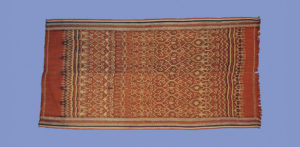
1 Comments